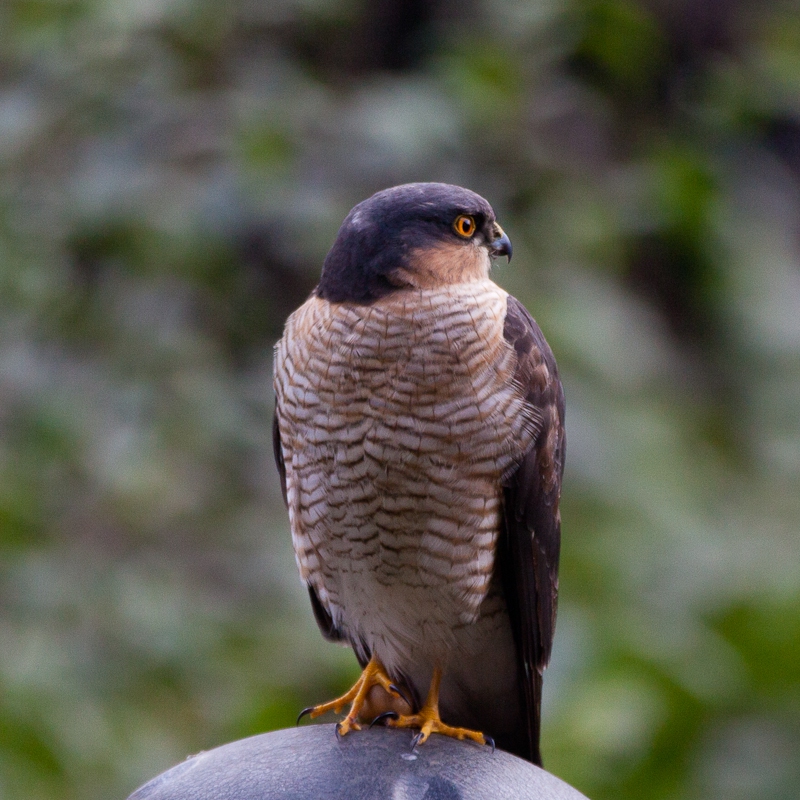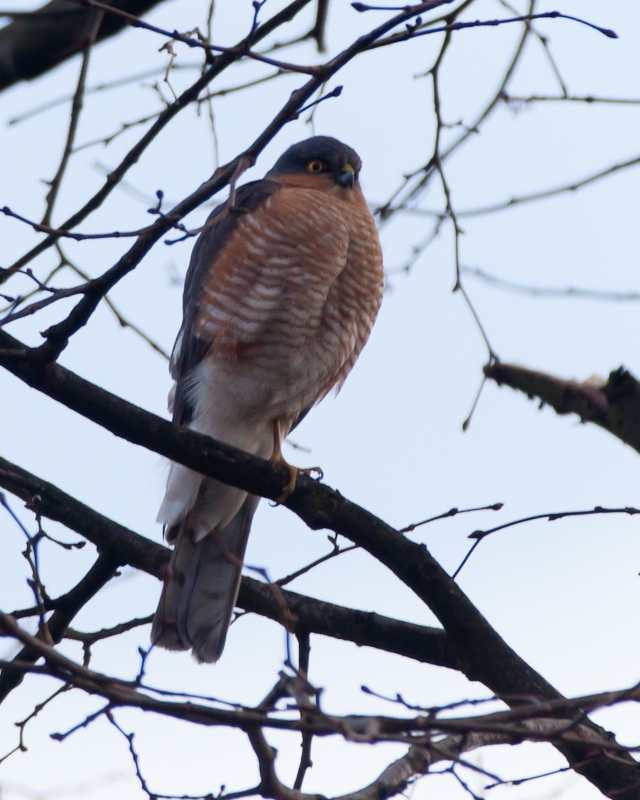Dowanhill Bob, our local sparrowhawk, has been ruling the roost in the West End this winter, terrorising our garden residents, including siskins, goldfinches, robins, chaffinches, great tits, coal tits, blue tits, tree sparrows and even wood pigeons. The only birds that stand up to him and chase him away are the crows.
Our garden used to be teeming with little birds, but since Bob has appeared on the scene, it has been extremely quiet. And when the birds are in our garden, they are visibly on edge, looking round from a branch in the undergrowth, swooping into the seed feeder, grabbing a sunflower heart, and swooping off into the undergrowth to eat it. A complete contrast to last winter, when literally hundreds of birds were in our garden feasting on the seeds, fighting for a spot on the feeder.
We have been seeing Bob daily, when he swoops into Athol lane and perches on the tree at the back of our garden or sometimes on top of the seed feeder in the middle of our garden. Unfortunately, the tree in the back is too far away to get any decent shots, but when he is on the seed feeder, he is within good range as you can see.
He is lovely coloured male and hopefully I’ll be able to get some shots of him in flight soon.

